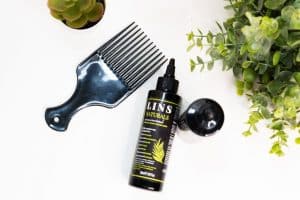Case Study: Restoring Damaged Hair – A Personal Journey
Hair damage is a common issue many people face, stemming from various sources like over-styling, chemical treatments, and environmental stressors. In this case study, we dive into Sarah’s personal journey to restore her damaged hair to its former glory. Sarah’s story is one of determination, research, and the power of the right hair care routine.
Understanding Hair Damage
The Root Causes
Hair damage can occur for several reasons. For Sarah, the main culprits were:
- Chemical Treatments: Years of regular hair coloring left her hair weak and brittle.
- Heat Styling: Daily use of hair straighteners and curling irons caused significant heat damage.
- Environmental Factors: Pollution and sun exposure further contributed to her hair’s deteriorating condition.
The Symptoms
Sarah noticed several signs of hair damage, including:
- Split ends
- Dryness and lack of moisture
- Significant hair breakage
- Loss of natural shine
- Increased hair loss
These symptoms made her hair difficult to manage and affected her confidence. Determined to reverse the damage, Sarah embarked on a comprehensive hair restoration journey.
The Initial Assessment
Sarah’s first step was to consult with a trusted hair care professional. During the assessment, the stylist examined her hair’s condition and provided a detailed diagnosis. The results were clear: Sarah’s hair cuticles were severely damaged, leading to moisture loss and increased breakage. The stylist recommended a multi-step approach to address the damage and promote healthy hair growth.
Cutting Off the Damage
The Big Chop
One of the most challenging decisions Sarah had to make was cutting off the most damaged parts of her hair. While the idea of losing length was daunting, it was necessary to prevent further breakage and give her hair a fresh start. The stylist suggested a medium-length bob, which allowed Sarah to retain some length while removing the worst of the damage.
Emotional Impact
Cutting off a significant portion of her hair was an emotional experience for Sarah. She had always associated long hair with femininity and beauty. However, she soon realized that healthy, shorter hair was far more appealing than long, damaged hair. Embracing the change, Sarah felt a renewed sense of confidence and excitement about her hair restoration journey.
Choosing the Right Products
Keratin for Strength
The stylist recommended products rich in keratin, a protein that helps strengthen and repair the hair shaft. Keratin treatments can fill in gaps in the hair cuticle, making the hair smoother and more resilient. Sarah incorporated a keratin-infused shampoo and conditioner into her routine, which significantly improved her hair’s texture and strength.
Argan Oil for Hydration
Dryness was a major issue for Sarah, so the stylist suggested using argan oil. This natural oil is known for its deep hydrating properties and ability to add shine. Sarah applied a few drops of argan oil to her damp hair after every wash, focusing on the ends where the damage was most severe. The result was softer, shinier hair that looked and felt healthier.
Biotin for Growth
To promote hair growth, Sarah started taking biotin supplements. Biotin, also known as vitamin B7, plays a crucial role in maintaining healthy hair. In addition to supplements, Sarah incorporated biotin-rich foods into her diet, such as eggs, nuts, and avocados. Over time, she noticed improved hair growth and reduced hair loss.
Silicone-Free Conditioner
To avoid product buildup and ensure better absorption of nutrients, Sarah switched to a silicone-free conditioner. Silicone can create a barrier on the hair, preventing moisture and beneficial ingredients from penetrating the hair shaft. The new conditioner left her hair feeling lighter and more nourished.
Establishing a Routine
Gentle Shampooing
Sarah adopted a gentle shampooing routine, washing her hair only 2-3 times a week with a sulfate-free shampoo. Sulfates can strip the hair of its natural oils, exacerbating dryness and damage. By reducing the frequency of washing and using a gentler shampoo, Sarah helped preserve her hair’s natural moisture balance.
Deep Conditioning
Deep conditioning became a weekly ritual for Sarah. She used a deep conditioner or hair mask to restore moisture and repair damage. After applying the conditioner, she would wrap her hair in a warm towel and leave it on for at least 20 minutes to allow the product to penetrate deeply. This step made a noticeable difference in her hair’s hydration and elasticity.
Leave-In Treatments
To protect her hair from heat and environmental damage, Sarah applied a leave-in conditioner or serum after every wash. These products provided an additional layer of moisture and protection, helping to prevent further damage and keep her hair looking healthy.
Heat Protection
Whenever Sarah used hot styling tools, she never skipped the heat protectant spray. Heat protectants form a barrier between the hair and the heat source, reducing the risk of damage. By incorporating this step into her routine, Sarah minimized the negative impact of heat styling on her hair.
Regular Trims
To maintain healthy ends and prevent split ends, Sarah visited the salon every 6-8 weeks for a trim. Regular trims helped her hair grow stronger and longer by removing the damaged tips and promoting healthy growth.
Dietary Changes
Protein for Strength
Understanding that healthy hair starts from within, Sarah increased her intake of protein. Protein is essential for hair strength and growth, so she included more lean meats, fish, eggs, and legumes in her diet. The additional protein provided her hair with the building blocks it needed to repair and grow.
Omega-3 Fatty Acids for Scalp Health
Omega-3 fatty acids, found in foods like fish, flaxseeds, and walnuts, support scalp health and reduce inflammation. Sarah incorporated these foods into her diet to ensure her scalp remained healthy and conducive to hair growth.
Vitamins and Minerals
Sarah made sure to include a variety of vitamins and minerals in her diet, particularly those known to benefit hair health. Biotin, vitamin E, and zinc were her focus, as they play a crucial role in maintaining strong, healthy hair. She ate more fruits, vegetables, nuts, and seeds to get these essential nutrients.
Patience and Persistence
Hair restoration is not an overnight process. Sarah was diligent in her routine and patient in waiting for results. She took progress photos to stay motivated and track her journey. Over time, her consistency and dedication paid off.
The Transformation
Six-Month Progress
After six months of consistent care, Sarah’s hair showed remarkable improvement. It was noticeably shinier, softer, and stronger. The breakage had significantly reduced, and she saw new growth where hair had previously thinned. Friends and family noticed the difference and often complimented her on her hair’s transformation.
Before and After
Comparing her hair before and after the restoration journey was astonishing. The dull, brittle, and damaged hair had been replaced with vibrant, healthy locks. Sarah’s confidence soared, and she felt more comfortable experimenting with different styles and looks.
Sarah’s Tips for Others
Sarah’s journey taught her valuable lessons about hair care, which she eagerly shares with others facing similar challenges:
- Consistency is Key: Regular care and patience are essential for restoring damaged hair. Stick to your routine and give it time to work.
- Professional Advice Matters: Consulting with a hair care professional can provide personalized recommendations that address your specific needs.
- Healthy Lifestyle: A balanced diet and proper hydration contribute significantly to hair health. Nourish your body from within for the best results.
- Quality Products: Investing in the right products can make a significant difference. Choose products tailored to your hair type and condition.
Conclusion
Sarah’s story is an inspiring reminder that with the right approach and dedication, it is possible to restore even the most damaged hair. If you’re struggling with hair damage, consider following a similar multi-step approach to achieve healthier, stronger, and more beautiful hair. Remember, the journey to healthy hair is a marathon, not a sprint, but the results are worth the effort.
Feel free to reach out in the comments below with your own hair restoration stories or tips! Let’s create a community of support and encouragement for everyone on their hair care journey.
FAQs
How long does it take to see results from a hair restoration routine?
Results can vary depending on the extent of the damage and the consistency of the routine. Generally, noticeable improvements can be seen within a few months of regular care.
Can hair damage be completely reversed?
While severe damage may not be entirely reversible, significant improvements can be achieved with the right care and products. Regular trims, deep conditioning, and proper protection can restore much of the hair’s health and appearance.
Are there any specific products you recommend for damaged hair?
Products containing keratin, argan oil, and biotin are highly recommended for repairing and strengthening damaged hair. Look for sulfate-free shampoos and silicone-free conditioners to avoid further damage.
How often should I get my hair trimmed to maintain its health?
Regular trims every 6-8 weeks are ideal for maintaining healthy ends and preventing split ends. This helps promote overall hair health and growth.
Is a healthy diet really that important for hair health?
Absolutely! A balanced diet rich in vitamins, minerals, and protein is essential for maintaining healthy hair. Nutrients from your diet provide the building blocks needed for strong, vibrant hair.
What should I avoid to prevent further hair damage?
To prevent further damage, avoid excessive heat styling, over-washing, and chemical treatments. Protect your hair from environmental stressors like pollution and UV rays by using appropriate hair care products.




